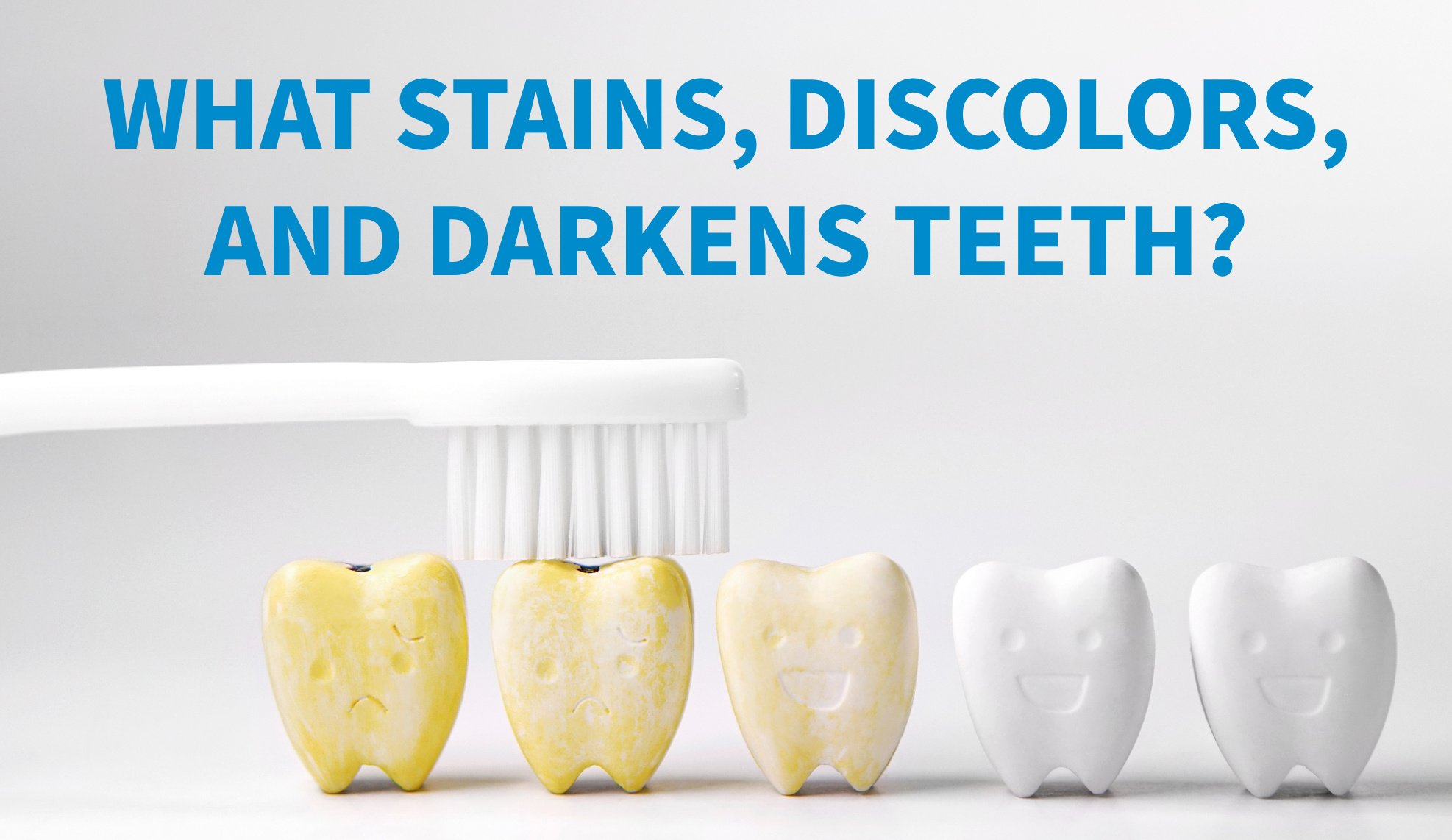By Daniel Lewis
Starting your journey toward a bright smile begins with understanding the diverse factors that can introduce stains to our teeth.
While some staining factors are out of our control, understanding the various causes can help you make informed decisions about your dental health. Recognizing these factors can help you take preventative measures and maintain a dazzling smile.
- Certain Diseases and Medical Treatments
- Chemotherapy: This powerful cancer treatment can discolor teeth.
- Infection during pregnancy: Some infections can impact tooth coloration in the unborn child.
- Medications: The antibiotics tetracycline and doxycycline, if given to children under age 8, can darken their teeth. Additionally, antihistamines, antipsychotic drugs, and antihypertensive medications can affect tooth color.
- Mouthwashes: Rinses containing chlorhexidine and cetylpyridinium chloride can result in staining.
- Aging
- As we grow older, the enamel on our teeth wears down, revealing the yellower dentin underneath. Concurrently, the dentin grows, which reduces the size of the pulp, making the teeth look darker.
- Diet
- Certain drinks and foods, such as coffee, tea, colas, wines, and starchy foods like pasta or potatoes can stain teeth. To minimize this, consider rinsing with water and brushing after consumption.
- Tobacco Use
- The black tar from tobacco products builds up on teeth, leading to noticeable staining.
- Poor Hygiene
- Neglecting to brush and floss can lead to the accumulation of plaque and food stains. Regular dental cleanings are essential for preventing stain build-up.
- Genetic Variation
- Genetics can play a role in the thickness and color of tooth enamel. Some people are naturally blessed with thicker, whiter enamel.
- Dental Materials
- Certain dental restorations, especially those containing silver sulfide, can impart a gray-black hue to the teeth.
- Blunt Trauma
- Injuries, especially in kids under 8, can disturb enamel formation. Trauma in adults can also cause discoloration if it impacts blood flow or kills the tooth's nerve.
- Environment
- Excessive fluoride exposure during tooth development can result in fluorosis, which manifests as permanent white spots on the teeth.
Regular dental check-ups, a balanced diet, and good oral hygiene practices can go a long way in preserving the natural whiteness of your teeth.








